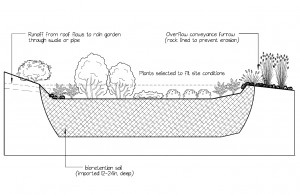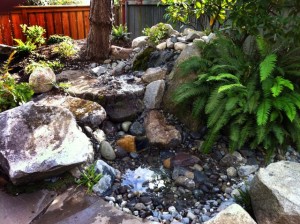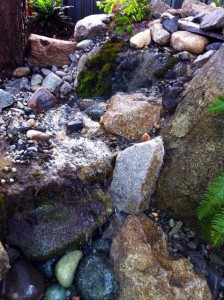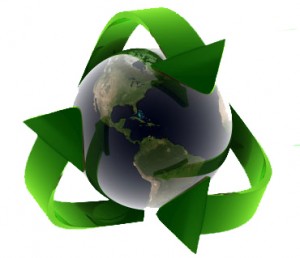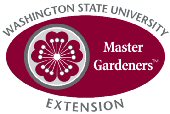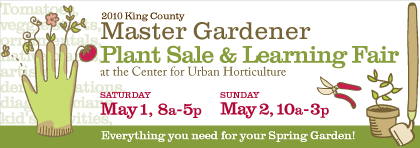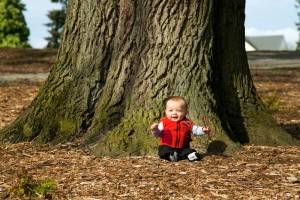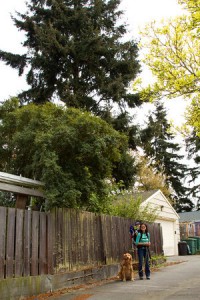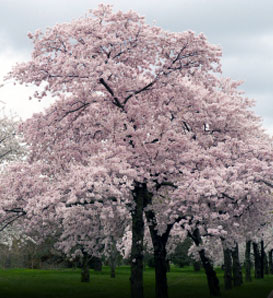It was a typical dreary Saturday morning, and we probably would have spent it indoors, except we noticed in the West Seattle blog that the Seattle Chinese Garden was offering tours at 10 a.m. and 1:30 p.m. The Seattle Chinese Garden? Wasn’t this the same garden that has been in the works for over two decades? We had seen mounds of dirt behind construction fences each time we visited the botanical gardens at South Seattle Community College, but not much else. Curious, we went to check it out (detailed directions to get there).
A very knowledgeable docent named Dewey Webster invited us into the new Chan Education Center, where for the next hour, he presented a slide-show explaining how the garden is the first garden of its kind to be built in the style of the Sichuan province. The garden was designed in close collaboration with Seattle’s sister city of Chongqing — so close, in fact, that architects and skilled construction workers have all flown to Seattle from China for many aspects of the project. Bricks, rockeries, stone pavings and others materials have also been shipped from Sichuan so that the garden resembles, as much as possible, a typical Sichuan garden.
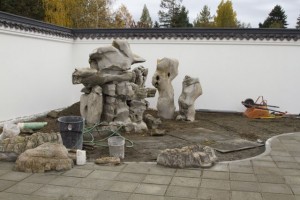
Rocks and materials are brought in from China.
As the docent explained, Chinese gardens contain four elements that all work to balance each other and bring harmony and peace: water, stone, plants and architecture. The elements represent the ying (plants, ponds, streams) and the yang (courtyard, rockeries, architecture). A Chinese garden also attempts to incorporate the natural world into the garden setting; the inclusion of rockeries and stone, for example, symbolize mountains. The other fascinating aspect of a Chinese garden is how it incorporates winding, zigzag pathways (evil spirits travel in a straight line, the docent said, so winding pathways help keep them at bay). “Leak windows” also offer enticing views of the outside landscape and invite visitors to continue to explore.
In keeping with the Chinese philosophy, the Seattle Chinese Garden will include pathways lined with bamboo, maples and pines, a stream that runs from the south end of the garden cascading down to the farthest northern end. The 4.6 acre garden (which sits on state-owned property adjacent to South Seattle Community College’s botanical gardens) will have a large entry courtyard, an 85-foot tall building called the “Floating Clouds Tower” and a cultural center.
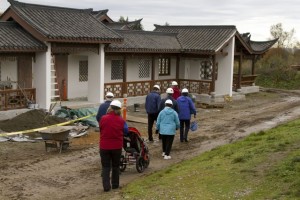
Seattle Chinese Garden under construction
After the slideshow Saturday, we put on white construction hats and took a peek at what’s been done on the large entry courtyard, called Knowing the Spring Courtyard. The foundation was laid by a local construction company, but the intricate details — from the stonework to the formal gate to the wooden leak windows — is being handled by a team of 21 artisans from China. They’ll be here until late November. A few of them smiled at us as we walked toward the courtyard. They apparently arrived in August and have been living in trailers on the construction site. A great deal of the work is being done by hand. The workers have been meticulously, laboriously chiseling the stone pavers in the courtyard to give them a non-slip surface. According to the docent, some of the naturally weathered rocks that border the pond in the courtyard were imported from China because locally sourced rock was deemed “too young” and not weathered enough.
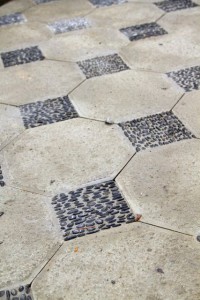
Black river rock inlay in pavers
The garden is far from complete, though the courtyard is expected to be done late this year with a dedication ceremony expected in the spring of 2011. Significant funding is still needed to get the complete project to the final finish line. The project, however, has the necessary permits and architectural and design plans, so at least some of the heavy lifting has been done. The Chinese government has donated about $1.2 million in materials and labor. The city of Seattle and the state have committed money as well. More than $7 million has been raised so far, but more is needed. The project is run by the nonprofit Seattle Garden Society, which has launched a brick campaign to raise money.
Public tours are held every Wednesday at 1:30 p.m., and every Saturday at 10:00 and 1:30. No need to register, but there’s a $5 suggested donation. You can also arrange special tours for groups of 10 or more by calling 206-764-5219.
